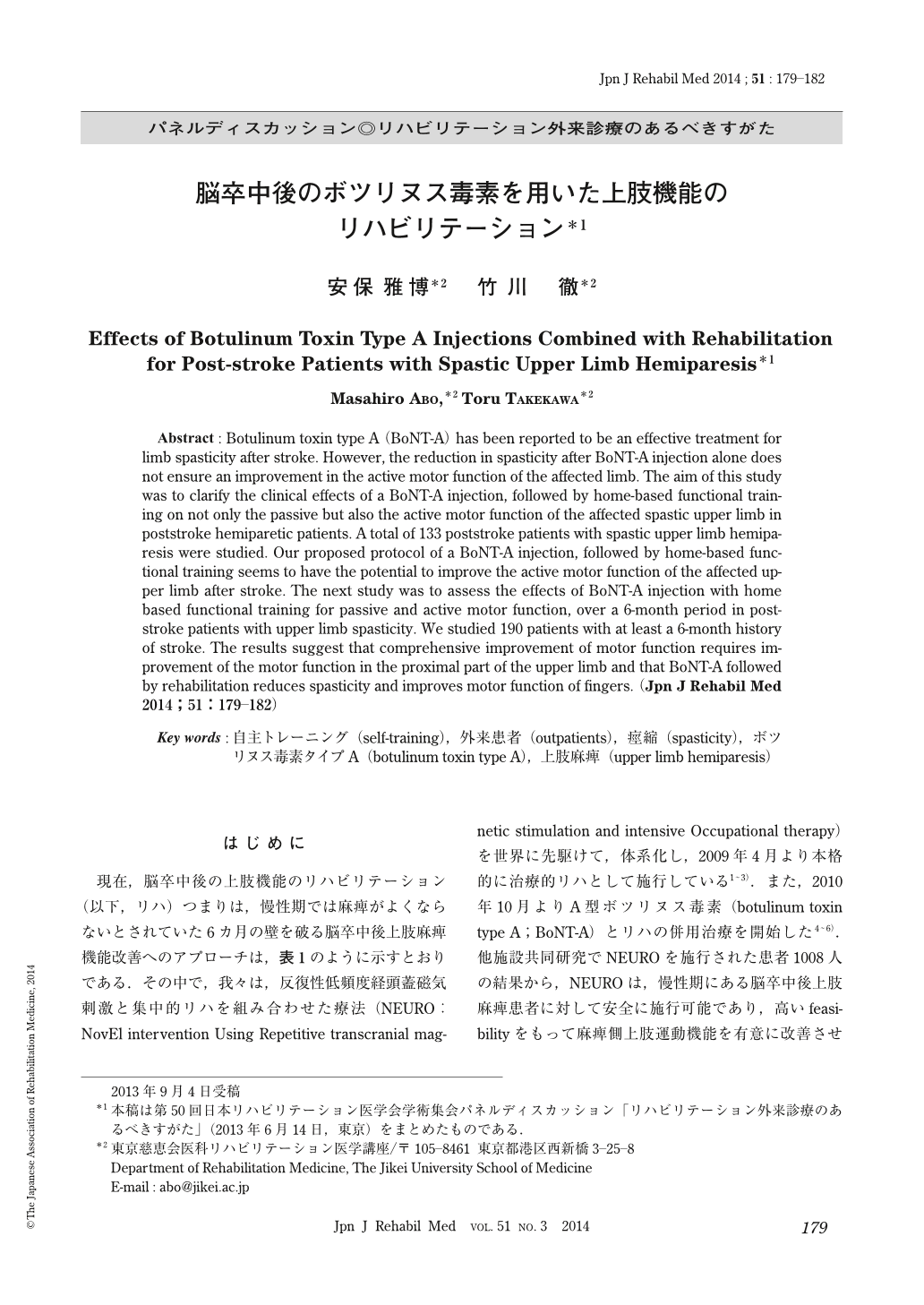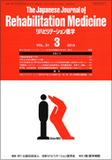Japanese
English
- 販売していません
- Abstract 文献概要
- 1ページ目 Look Inside
- 参考文献 Reference
はじめに
現在,脳卒中後の上肢機能のリハビリテーション(以下,リハ)つまりは,慢性期では麻痺がよくならないとされていた6カ月の壁を破る脳卒中後上肢麻痺機能改善へのアプローチは,表1のように示すとおりである.その中で,我々は,反復性低頻度経頭蓋磁気刺激と集中的リハを組み合わせた療法(NEURO:NovEl intervention Using Repetitive transcranial magnetic stimulation and intensive Occupational therapy)を世界に先駆けて,体系化し,2009年4月より本格的に治療的リハとして施行している1〜3).また,2010年10月よりA型ボツリヌス毒素(botulinum toxin type A;BoNT-A)とリハの併用治療を開始した4〜6).他施設共同研究でNEUROを施行された患者1008人の結果から,NEUROは,慢性期にある脳卒中後上肢麻痺患者に対して安全に施行可能であり,高いfeasibilityをもって麻痺側上肢運動機能を有意に改善させる可能性をもつことを示唆した3).しかしながら,NEUROで片麻痺が完全に良くなるわけではなく,重症の片麻痺では改善度が少ない.とくに指は少しでも伸展動作が自力でできないと著明な効果は期待できない.腕も少しでも自力で伸ばすことができれば改善度が期待できる.よって,現在,脳卒中後上肢機能のリハに対して,重症度を評価して最も効果があると考えられるNEURO,BoNT-Aあるいは両者の併用7)を行っている.
Abstract : Botulinum toxin type A (BoNT-A) has been reported to be an effective treatment for limb spasticity after stroke. However, the reduction in spasticity after BoNT-A injection alone does not ensure an improvement in the active motor function of the affected limb. The aim of this study was to clarify the clinical effects of a BoNT-A injection, followed by home-based functional training on not only the passive but also the active motor function of the affected spastic upper limb in poststroke hemiparetic patients. A total of 133 poststroke patients with spastic upper limb hemiparesis were studied. Our proposed protocol of a BoNT-A injection, followed by home-based functional training seems to have the potential to improve the active motor function of the affected upper limb after stroke. The next study was to assess the effects of BoNT-A injection with home based functional training for passive and active motor function, over a 6-month period in post-stroke patients with upper limb spasticity. We studied 190 patients with at least a 6-month history of stroke. The results suggest that comprehensive improvement of motor function requires improvement of the motor function in the proximal part of the upper limb and that BoNT-A followed by rehabilitation reduces spasticity and improves motor function of fingers.

Copyright © 2014, The Japanese Association of Rehabilitation Medicine. All rights reserved.


